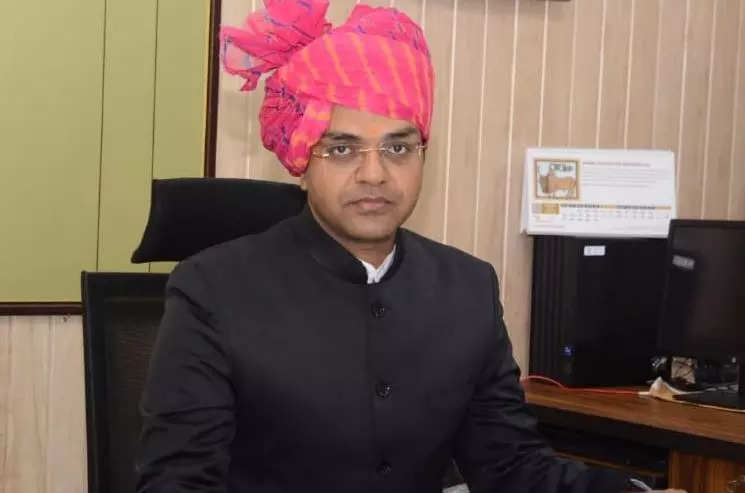
“Infrastructure is not a major challenge for me since Kota is already a well-developed district. However, my focus has been on three key areas. First, maintaining existing infrastructure to ensure its longevity. Second, improving rural infrastructure, especially in areas affected by heavy rains.
“We assessed the damage, prepared estimates, and secured government approvals for necessary repairs. Third, addressing connectivity issues in unconnected villages—we have submitted proposals, and their execution depends on budget allocations. We have also made progress on the Kota airport project. The city lacked air connectivity, but work is now in progress and is expected to begin this financial year.”
This was stated by Dr. Ravindra Goswami,Collector & District Magistrate, Rajasthan, in conversation with ETGovernment’s Yagrica Repswal.
Edited excerpts:
As the District Collector of Kota what are key development projects that you are pursuing?
Kota district has both urban and rural components, so my priorities address both aspects. In rural areas, I focus on improving agriculture, enhancing farmers’ livelihoods, and implementing social welfare schemes effectively. In urban areas, my key priorities include boosting economic growth through tourism, industrial policies, and infrastructure development. Additionally, Kota’s coaching industry plays a vital role in the local economy, so ensuring a supportive environment for students and institutions is crucial. My overall approach is to balance rural development with urban progress, ensuring holistic growth for the district while addressing the needs of both communities effectively.
What recent developments have been made in Kota’s infrastructure, including roads, public transportation and healthcare facilities?
Infrastructure was not a major challenge for me since Kota is already a well-developed district. However, my focus has been on three key areas. First, maintaining existing infrastructure to ensure its longevity. Second, improving rural infrastructure, especially in areas affected by heavy rains. We assessed the damage, prepared estimates, and secured government approvals for necessary repairs. Third, addressing connectivity issues in unconnected villages—we have submitted proposals, and their execution depends on budget allocations. We have also made progress on the Kota airport project. The city lacked air connectivity, but work is now in progress and is expected to begin this financial year.How is technology being used in Kota to improve transparency, public services, and infrastructure planning?
Technology has been crucial in enhancing governance. For grievance handling, we use the Sampark portal and the 181 helpline, reducing resolution time from over 30 days to 13–14 days, while also improving citizen satisfaction. During elections, we introduced a real-time queue tracking portal for polling booths, which helped increase voter turnout. We are developing a unique technological solution for Kota’s coaching students, aimed at addressing their specific needs. This initiative is in progress and expected to be launched in the coming months, further strengthening Kota’s position as an education hub.
Kota is known as India’s coaching capital. What measures is the administration taking to improve student safety, well-being, and infrastructure for the increasing number of students?
We launched the Kamyab Kota campaign for the overall development of the district, with a special focus on student welfare. As part of this, we have assigned mentors to coaching institutes to ensure they follow guidelines for students’ well-being. We also conducted Gatekeeper Training, one of the largest WHO-recommended mental health programs, which has helped save lives. To connect with students directly, I started Dinner with the Collector, where I meet students every week in an informal setting to listen to their concerns and find the best possible ways for providing support and solutions.
Kota has a rich cultural and historical heritage. What new projects or campaigns are being planned to promote tourism and attract more visitors?
Tourism is one of the least developed sectors in the district, and we are working closely with all stakeholders to improve it. Kota has a rich heritage, so we are in discussions with heritage property owners to preserve and promote its historical sites. Last December, we organized Kota Mahotsav, a city-wide festival that was a huge success. It highlighted the Kota Riverfront, which is among the best in India, and possibly Asia. Around 3 to 5 lakh people participated. We aim to make tourism a key economic driver alongside coaching and industries.
What is your long-term vision for Kota, and what key areas do you aim to focus on to ensure the district’s sustainable growth and prosperity?
In the long term, my vision for Kota revolves around balanced rural and urban development. For rural areas, agriculture and agro-processing are key focus areas. We aim to equip farmers with better skills and introduce them to modern technologies like drones and IT-based solutions. Initiatives like Kisan Melas have already helped in this direction, and we will continue expanding such efforts. In urban areas, the priority is strengthening industries, tourism, and the coaching sector, as these are the main economic drivers. Additionally, improving education and learning outcomes remains a critical goal to ensure holistic development across the district.


Comments